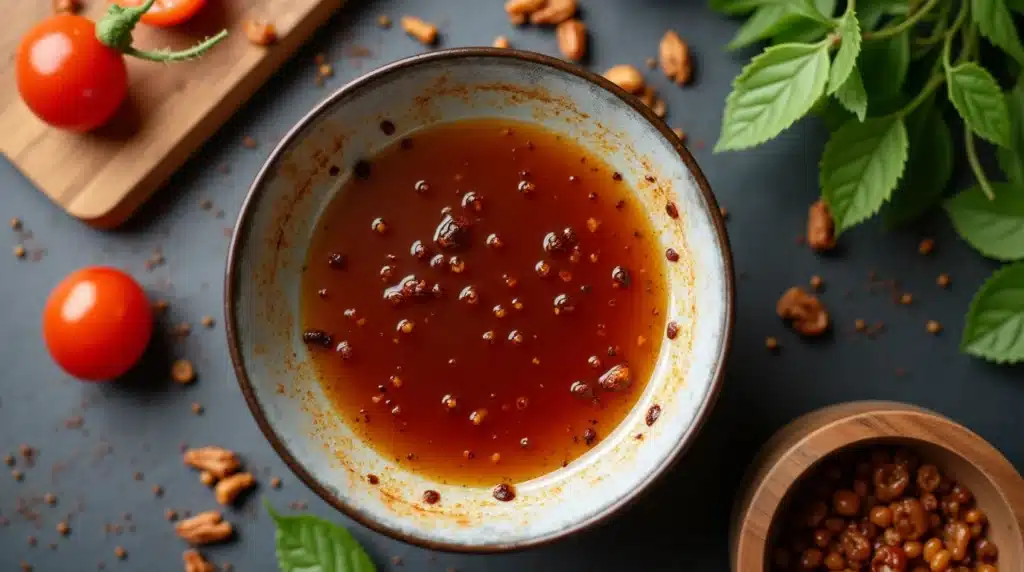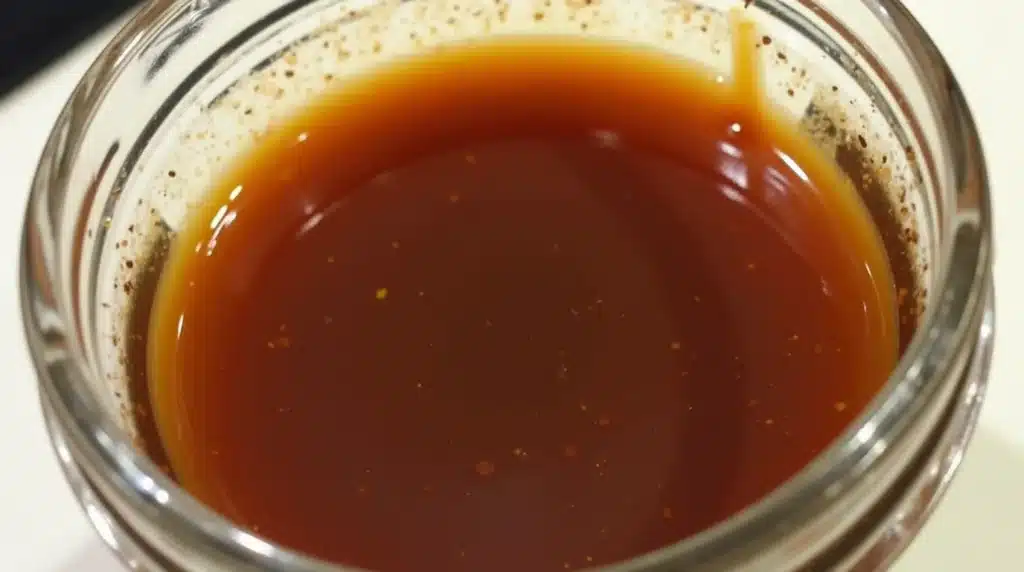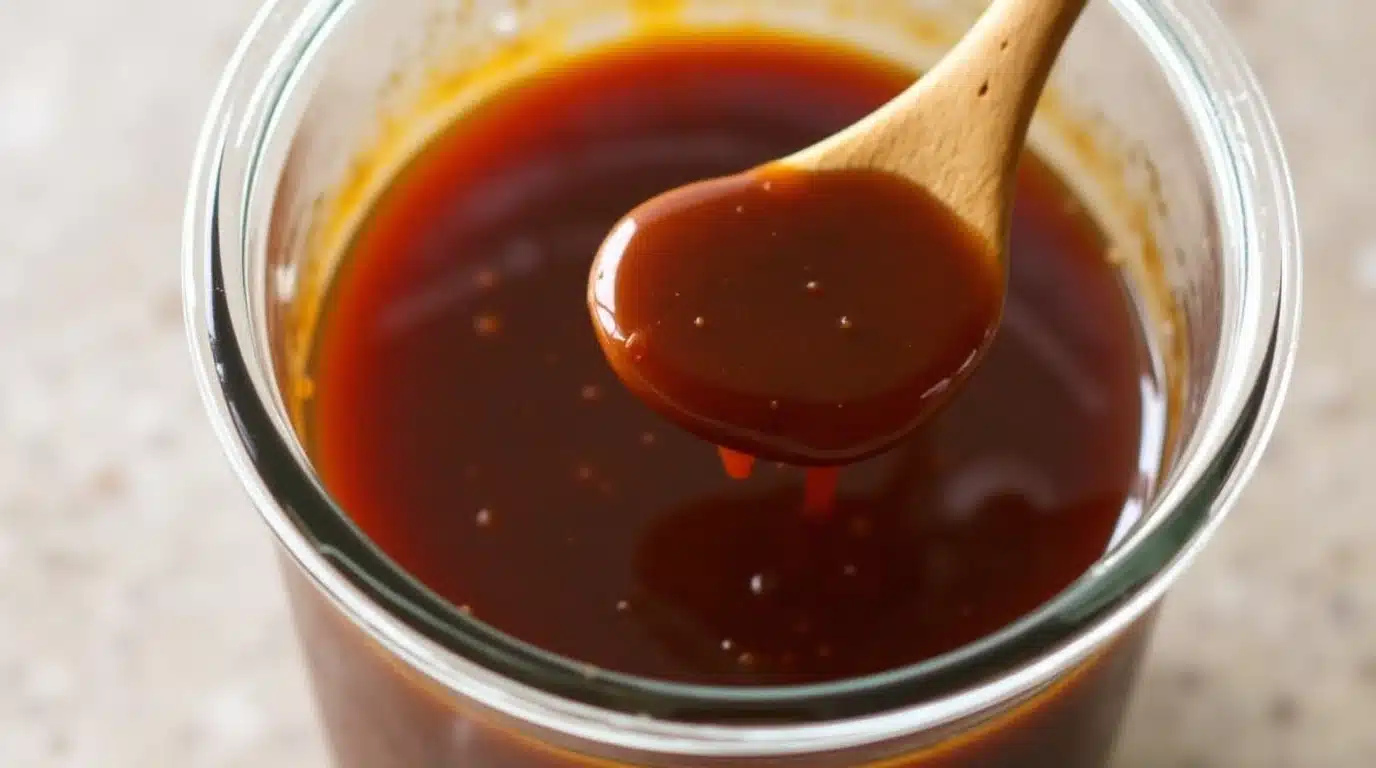Discover the secrets to crafting exceptionally delicious, homemade gluten-free teriyaki sauce. This comprehensive guide provides everything you need, from understanding essential ingredients to mastering advanced techniques and exploring creative variations, ensuring a flavorful and safe culinary experience for everyone.
Demystifying Gluten-Free Teriyaki Sauce: Understanding the Basics
Initially, understanding gluten-free teriyaki sauce requires recognizing why traditional teriyaki often contains gluten. Consequently, many commercially available teriyaki sauces utilize wheat-based soy sauce as a key ingredient. Therefore, creating your gluten-free teriyaki sauce guarantees a safe and delicious alternative, free from hidden gluten sources. Furthermore, it allows for complete control over ingredients and flavor profiles.
Essential Ingredients for Authentic Gluten-Free Teriyaki Sauce
First and foremost, you’ll need gluten-free soy sauce, commonly known as tamari. Specifically, tamari is a naturally brewed soy sauce made without wheat, unlike traditional soy sauce. Additionally, mirin (a sweet Japanese rice wine) and sake (Japanese rice wine) contribute essential sweetness and depth of flavor. Furthermore, a sweetener – such as sugar, honey, maple syrup, or agave nectar – balances the savory and umami notes. Finally, fresh ginger and garlic add aromatic complexity and enhance the overall taste.
PrintUnlock Flavor: The Ultimate Guide to Amazing Gluten-Free Teriyaki Sauce
- Total Time: 10 minutes
- Yield: 3/4 cup 1x
Description
A sweet, savory, and gluten-free teriyaki sauce perfect for stir-fries, marinades, or dipping. Made with tamari instead of soy sauce and thickened naturally.
Ingredients
1/2 cup gluten-free tamari
1/4 cup water
2 tablespoons maple syrup or honey
2 tablespoons rice vinegar
1 tablespoon sesame oil
1 teaspoon garlic, minced
1 teaspoon fresh ginger, grated
1 tablespoon cornstarch
2 tablespoons water (for slurry)
Instructions
1. In a small saucepan, combine tamari, 1/4 cup water, maple syrup (or honey), rice vinegar, sesame oil, garlic, and ginger.
2. Bring to a simmer over medium heat, stirring occasionally.
3. In a small bowl, mix cornstarch with 2 tablespoons water to create a slurry.
4. Once the sauce is simmering, slowly whisk in the cornstarch slurry.
5. Continue to cook and stir until the sauce thickens, about 2–3 minutes.
6. Remove from heat and let cool slightly before using or storing.
Notes
Store in an airtight container in the refrigerator for up to 1 week.
For a spicier version, add a pinch of red pepper flakes or a dash of sriracha.
Use in stir-fries, as a glaze for grilled meats, or as a dipping sauce for dumplings.
- Prep Time: 5 minutes
- Cook Time: 5 minutes
- Category: Sauce
- Method: Stovetop
- Cuisine: Asian
Nutrition
- Serving Size: 1 tablespoon
- Calories: 25
- Sugar: 3g
- Sodium: 380mg
- Fat: 1g
- Saturated Fat: 0g
- Unsaturated Fat: 1g
- Trans Fat: 0g
- Carbohydrates: 4g
- Fiber: 0g
- Protein: 0g
- Cholesterol: 0mg
Keywords: gluten-free teriyaki, tamari sauce, homemade teriyaki, stir-fry sauce
Step-by-Step Guide: Crafting Perfect Gluten-Free Teriyaki Sauce at Home
- Gather Your Ingredients: Ensure you have gluten-free soy sauce (tamari), mirin, sake, your chosen sweetener, fresh ginger, and fresh garlic.
- Combine Liquid Ingredients: In a small saucepan, combine the gluten-free soy sauce (tamari), mirin, and sake.
- Add Sweetener: Add your chosen sweetener to the saucepan. The amount will depend on your preference and the type of sweetener used. Start with a smaller amount and adjust to taste.
- Prepare Aromatics: Peel and finely grate fresh ginger. Mince fresh garlic. Add both to the saucepan.
- Whisk Thoroughly: Whisk all the ingredients together until they are well combined and the sweetener is fully dissolved.
- Bring to a Simmer: Place the saucepan over medium heat and bring the mixture to a gentle simmer.
- Reduce Heat: Once simmering, reduce the heat to low to maintain a gentle simmer.
- Stir Occasionally: Stir the sauce occasionally to prevent sticking and ensure even cooking.
- Simmer Until Thickened: Continue simmering for approximately 10-15 minutes, or until the sauce reaches your desired consistency. Keep in mind that the sauce will thicken further as it cools.
- Cool and Store: Remove the saucepan from the heat and allow the gluten-free teriyaki sauce to cool completely. Once cooled, transfer the sauce to an airtight container and store it in the refrigerator for up to two weeks.

Elevating Your Gluten-Free Teriyaki Sauce: Exploring Flavorful Variations
Once you’ve mastered the basic gluten-free teriyaki sauce recipe, you can unlock a world of flavor possibilities by experimenting with variations. Consequently, you can tailor your sauce to perfectly complement any dish and suit your personal preferences.
Honey-Infused Gluten-Free Teriyaki Sauce: A Richer, Deeper Sweetness
Substitute honey for sugar in an equal amount (or adjust to taste). Specifically, honey adds a richer, more complex sweetness and a subtle floral note. Furthermore, it contributes to a slightly thicker, stickier consistency, which is ideal for glazing.
Citrus-Infused Gluten-Free Teriyaki Sauce: A Bright and Tangy Twist
Add a squeeze of fresh lime juice, lemon juice, or orange juice after the sauce has simmered and been removed from the heat. Specifically, the acidity of the citrus brightens the flavor profile and adds a refreshing zest. Consequently, this variation provides a delightful contrast to the savory and umami notes of the sauce.
Spicy Gluten-Free Teriyaki Sauce: Adding a Kick of Heat
Incorporate a pinch of red pepper flakes, a dash of cayenne pepper, or a finely minced chili pepper during the simmering process. However, start with a small amount and gradually increase it to achieve your desired level of spiciness. Specifically, this variation adds a welcome heat that complements the sweetness and savory flavors.
Pineapple Gluten-Free Teriyaki Sauce: A Tropical Touch of Sweetness
Add a few tablespoons of unsweetened pineapple juice during the simmering process. Consequently, this imparts a tropical sweetness and a subtle tanginess that pairs beautifully with the other ingredients. Furthermore, the pineapple enzymes can help tenderize proteins when used as a marinade.
Garlic-Ginger Powerhouse Gluten-Free Teriyaki Sauce: Extra Aromatic
Increase the amount of fresh ginger and garlic. Specifically, doubling or even tripling the original amounts creates a more intense and aromatic sauce. Consequently, this variation is perfect for those who love bold flavors.
Sesame Gluten-Free Teriyaki Sauce: A Nutty and Aromatic Addition
Add a teaspoon of toasted sesame oil to the sauce after it has simmered and been removed from the heat. Additionally, sprinkle in some toasted sesame seeds for added texture and flavor. Specifically, sesame oil adds a rich, nutty aroma and flavor that complements the other ingredients beautifully.
Unleashing the Versatility of Gluten-Free Teriyaki Sauce: Culinary Applications
Gluten-free teriyaki sauce is incredibly versatile, extending far beyond a simple condiment. Chiefly, it excels as a marinade, glaze, dipping sauce, and stir-fry sauce. Moreover, it enhances the flavor of a wide range of dishes, from proteins to vegetables and even grains.
Marinating with Gluten-Free Teriyaki Sauce: Infusing Flavor and Tenderness
Marinate your choice of protein – chicken, beef, pork, tofu, tempeh, or seafood – in gluten-free teriyaki sauce for at least 30 minutes. Ideally, marinate for several hours or even overnight in the refrigerator for maximum flavor penetration and tenderization. Specifically, the sauce’s enzymes and sugars work together to break down tough muscle fibers, resulting in a more tender and flavorful final product.
Glazing with Gluten-Free Teriyaki Sauce: Achieving a Sticky, Flavorful Finish
Brush gluten-free teriyaki sauce onto your protein or vegetables during the final stages of cooking – whether grilling, baking, roasting, or pan-frying. Consequently, this creates a beautiful, caramelized glaze that adds a concentrated burst of sweet and savory flavor. Furthermore, the glaze adds visual appeal, making your dishes even more enticing.
Stir-Frying with Gluten-Free Teriyaki Sauce: A Quick and Easy Weeknight Meal
Add gluten-free teriyaki sauce to your stir-fries for a quick, easy, and flavorful weeknight meal. Specifically, the sauce coats the ingredients evenly, ensuring that every bite is infused with its deliciousness. Consequently, your stir-fries will be more flavorful, satisfying, and healthier than takeout options.
Dipping with Gluten-Free Teriyaki Sauce: A Flavorful Accompaniment
Serve your homemade gluten-free teriyaki sauce as a dipping sauce for a variety of appetizers, such as spring rolls, dumplings, gyoza, grilled vegetables, or chicken skewers. Specifically, the sauce’s umami-rich flavor complements these dishes perfectly. Consequently, it elevates your appetizers to a new level of deliciousness.
Beyond the Traditional: Creative Uses for Gluten-Free Teriyaki Sauce
- Salad Dressing: Whisk gluten-free teriyaki sauce with a bit of rice vinegar, sesame oil, and a touch of ginger for a unique and flavorful salad dressing.
- Grain Bowls: Drizzle gluten-free teriyaki sauce over rice bowls, quinoa bowls, or other grain bowls for added flavor and moisture.
- Tacos and Wraps: Use gluten-free teriyaki sauce as a flavorful sauce for tacos, wraps, or lettuce cups.
- Pizza Topping: Use gluten-free teriyaki sauce as a base sauce for a unique and delicious pizza.
- Burgers and Sandwiches: Use the sauce as a condiment.
Ensuring Safety: Avoiding Gluten Cross-Contamination
When preparing gluten-free teriyaki sauce, preventing cross-contamination is of utmost importance. Specifically, this ensures the safety of the sauce for individuals with celiac disease, gluten intolerance, or wheat allergies.
Dedicated Utensils and Cookware: Minimizing the Risk of Gluten Exposure
Use separate cutting boards, knives, utensils, and cookware exclusively for gluten-free food preparation. Indeed, this minimizes the risk of accidental gluten transfer from gluten-containing foods. Therefore, dedicate specific tools and equipment solely for gluten-free cooking to maintain a safe kitchen environment.
Careful Ingredient Selection: Reading Labels Diligently
Always meticulously check the labels of all ingredients to confirm that they are certified gluten-free. Particularly, be vigilant with soy sauce (tamari), mirin, and sake, as some brands may contain hidden gluten or be processed in facilities that also handle gluten-containing products. Consequently, thorough label reading is essential to ensure the safety of your gluten-free teriyaki sauce.
Proper Storage: Maintaining Purity and Preventing Cross-Contamination
Store your homemade gluten-free teriyaki sauce in a clearly labeled, airtight container in the refrigerator. Specifically, this prevents cross-contamination from other foods stored in the refrigerator and helps maintain the sauce’s freshness and flavor. Furthermore, clearly labeling the container helps avoid accidental use by individuals who may not be aware of its gluten-free status.

Deep Dive: Exploring the Science and Nuances of Gluten-Free Teriyaki Sauce Ingredients
Understanding the role and characteristics of each ingredient allows for greater control over the final product and empowers you to customize and troubleshoot your recipe with confidence. Therefore, let’s delve into the science and nuances of the key components.
Gluten-Free Soy Sauce (Tamari): The Umami Foundation and Flavor Backbone
Tamari, a naturally gluten-free soy sauce, serves as the foundation of gluten-free teriyaki sauce, providing the characteristic savory, umami flavor. Specifically, it’s traditionally made from fermented soybeans, water, and salt, without the addition of wheat, unlike conventional soy sauce. Consequently, it delivers a rich, complex flavor without the risk of gluten exposure. Furthermore, tamari tends to have a slightly thicker consistency and a more intense flavor than some gluten-free soy sauce alternatives, making it an excellent choice for teriyaki sauce.
Mirin: The Sweet Rice Wine – Adding Delicate Sweetness and Subtle Complexity
Mirin, a sweet Japanese rice wine, contributes a delicate sweetness and subtle complexity to gluten-free teriyaki sauce. Specifically, it’s made from fermented glutinous rice, cultured rice (koji), and shochu (a distilled Japanese spirit). Consequently, it adds a unique flavor profile that complements the savory notes of tamari and enhances the overall balance of the sauce. Furthermore, mirin helps create a glossy sheen when the sauce is used as a glaze. “Aji-mirin” is a common, less expensive substitute, but it often has added corn syrup.
Sake: The Dry Rice Wine – Providing Balancing Acidity and Depth
Sake, a dry Japanese rice wine, provides a balancing counterpoint to the sweetness of mirin and the umami of tamari. Specifically, it adds a subtle acidity and depth of flavor without overpowering the other ingredients. Consequently, it helps create a well-rounded and harmonious taste profile in the gluten-free teriyaki sauce. Cooking sake is often lower quality.
Sweeteners: Customizing the Flavor Profile and Texture
You can choose from a variety of sweeteners to customize the flavor profile and texture of your gluten-free teriyaki sauce. Options include:
- Granulated Sugar: Provides a clean, straightforward sweetness.
- Brown Sugar: Adds a molasses-like flavor and a slightly richer color.
- Honey: Contributes a richer, more complex sweetness and a subtle floral note. It also creates a slightly thicker, stickier sauce, making it ideal for glazing.
- Maple Syrup: Imparts a distinct maple flavor and a rich amber color.
- Agave Nectar: Offers a neutral sweetness and a thinner consistency.
Specifically, the choice of sweetener will influence the final taste and texture of the sauce. Experiment with different options to find your perfect balance.
Ginger and Garlic: The Aromatic Powerhouses – Enhancing Flavor and Complexity
Fresh ginger and garlic contribute essential aromatic complexity and enhance the overall flavor profile of gluten-free teriyaki sauce. Specifically, ginger adds a warm, zesty, and slightly spicy note, while garlic provides a pungent, savory depth. Consequently, these aromatics elevate the sauce to a new level of flavor and create a more well-rounded and satisfying taste experience. Furthermore, they have natural antibacterial properties that can help extend the shelf life of the sauce.
Troubleshooting Common Issues with Gluten-Free Teriyaki Sauce: Achieving Perfection
Even with a relatively simple recipe like gluten-free teriyaki sauce, occasional challenges may arise. Therefore, let’s address some common issues and provide effective solutions to help you achieve teriyaki perfection.
My Gluten-Free Teriyaki Sauce is Too Thin: Achieving the Desired Consistency
If your gluten-free teriyaki sauce turns out too thin, there are a couple of ways to address this:
- Simmer for Longer: Continue simmering the sauce over low heat for a longer period, allowing more of the liquid to evaporate. This will naturally thicken the sauce. Stir occasionally to prevent sticking.
- Add a Thickening Agent: Create a slurry by whisking together 1 teaspoon of cornstarch or arrowroot powder with 1 tablespoon of cold water until smooth. Gradually add the slurry to the simmering sauce, whisking constantly, until the desired thickness is achieved.
My Gluten-Free Teriyaki Sauce is Too Salty: Balancing the Flavors
If your gluten-free teriyaki sauce tastes too salty, you can try the following:
- Add More Sweetener: Incorporate additional sweetener, such as honey, maple syrup, or sugar, a little at a time, until the saltiness is balanced.
- Dilute with Liquid: Add a small amount of water, unsalted broth, or pineapple juice to dilute the sauce and reduce the saltiness.
- Add Acidity: A squeeze of lemon or lime juice, or a splash of rice vinegar, can help counteract the saltiness.
My Gluten-Free Teriyaki Sauce is Too Sweet: Adjusting the Sweetness Level
If your gluten-free teriyaki sauce is overly sweet, you can adjust the balance by:
- Adding More Gluten-Free Soy Sauce (Tamari): Incorporate additional tamari, a little at a time, until the sweetness is balanced by the savory umami flavor.
- Adding Acidity: A splash of rice vinegar or a squeeze of lemon or lime juice can help cut through the sweetness.
My Gluten-Free Teriyaki Sauce Lacks Flavor: Enhancing the Taste Profile
If your gluten-free teriyaki sauce seems bland or lacks depth of flavor, consider the following:
- Add More Aromatics: Increase the amount of fresh ginger and garlic.
- Incorporate Other Spices: Experiment with adding a pinch of five-spice powder, a dash of sesame oil (added after simmering), or a sprinkle of white pepper.
- Use a Higher Quality Tamari: The quality of your tamari can significantly impact the overall flavor. Consider trying a different brand.

Frequently Asked Question about Gluten-Free Teriyaki Sauce
This section addresses common questions and concerns about gluten-free teriyaki sauce, providing clear and concise answers to empower you on your culinary journey.
- Which teriyaki is gluten-free? Several brands offer commercially produced gluten-free teriyaki sauces, including Kikkoman Gluten-Free Teriyaki Marinade & Sauce and San-J Gluten-Free Teriyaki Sauce. However, it’s crucial to always double-check the label to ensure the product is certified gluten-free, as formulations can change. Making your gluten-free teriyaki sauce from scratch provides the most control over ingredients and ensures its safety.
- Why isn’t all teriyaki sauce gluten-free? Traditional teriyaki sauce recipes often include wheat-based soy sauce as a primary ingredient. Additionally, some commercial brands may use wheat-based thickeners or other additives that contain gluten. Consequently, these traditional formulations are unsuitable for individuals following gluten-free diets.
- Is PF Chang’s teriyaki sauce gluten-free? Unfortunately, PF Chang’s teriyaki sauce is not gluten-free. It typically contains wheat, making it unsafe for those with celiac disease or gluten sensitivity.
- Does Panda Express teriyaki sauce have gluten in it? Yes, Panda Express teriyaki sauce does contain gluten. It is not a safe option for individuals avoiding gluten due to celiac disease, gluten intolerance, or wheat allergies. It’s important to always inquire about ingredients and preparation methods when dining out to ensure your meal is gluten-free.
- Can I use coconut aminos instead of tamari? Yes.
- How long will homemade gluten-free teriyaki sauce last? 2 weeks.
- Can I freeze the sauce? Yes.
Embrace the Delicious and Versatile World of Homemade Gluten-Free Teriyaki Sauce
Making your gluten-free teriyaki sauce is a rewarding and empowering culinary endeavor. You can control the ingredients, ensuring a safe and delicious experience for those following gluten-free diets. Furthermore, it opens up a world of flavor possibilities, allowing you to customize the sauce to your preferences and create a wide range of dishes. Embrace the versatility and deliciousness of homemade gluten-free teriyaki sauce and elevate your cooking to new heights!
If you want to dive deeper into allergen-safe dessert options, check out our Lemon Blueberry Mascarpone Cake — a stunning example of indulgence without compromise.

